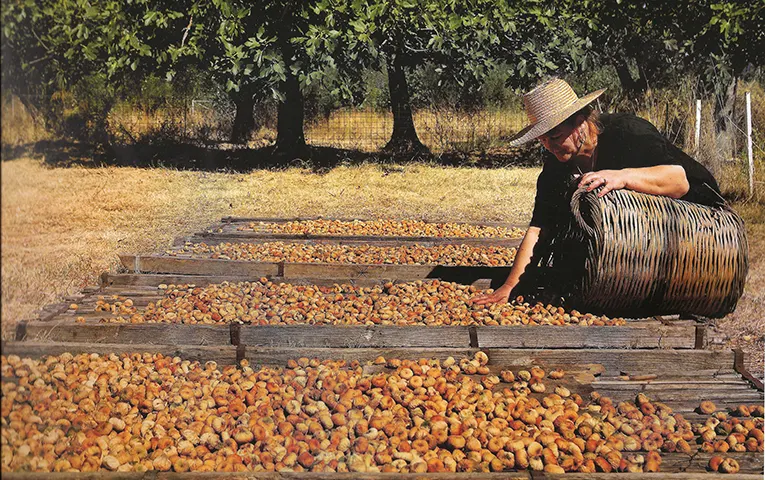By Maria Coveou
Greeks famously take any and every opportunity for a celebration, and masterfully hold on to time-honored traditions. In Messinia especially, tradition creates opportunities for social gatherings and the enjoyment of all types of celebrations that have come to attract large numbers of guests, both from around the Peloponnese and from other parts of Greece – as well as international visitors.
As in the rest of Greece, religious festivities constitute an important part of cultural life. In December, Christmas is marked with both familiar and local customs, and in early January, the Theophany will be celebrated by the sea in all of the region’s towns and villages. Later, Easter (with its procession of the Epitaphios, the flower-adorned funerary bier of Christ, on Good Friday; celebration of the resurrection of Christ on Holy Saturday; and spit-roasted lamb on Easter Sunday), is the highlight of the spring calendar. Easter is celebrated at Costa Navarino, where ladies from cultural associations wear traditional dresses and prepare treats for guests, including lalaggia (pancakes), galopita (milk pie) and labrokouloura, a sweet braided bread that is decorated with a red-dyed boiled egg.
May 1st, a day linked to the rejuvenation of the natural world, sees families and friends venturing out into nature in order to celebrate spring and weave wreaths of flowers. In addition to these national holidays, however, there are also numerous celebrations with different roots, often unique to Messinia.

Messinia’s unique celebrations
From early spring through late fall, historical events in Messinia are celebrated with popular festivities; The liberation of Kalamata from Turkish rule, for example, is celebrated every March 23, inducing a great sense of pride among the local inhabitants of the city that led the way in the struggle for independence. Another celebration whose roots can be traced back to the Greek Revolution is a spectacular competition featuring handmade fireworks that takes place in Kalamata at Easter. It is said that the Messinians would throw these gunpowder-filled cylinders to keep the Turks at bay. Come fall, representatives from each of the countries of the allied fleet (Britain, France, and Russia) take part in Navarinia, the anniversary event for the legendary Battle of Navarino (1827), commemorated annually on October 20th.
The events that occur during the Carnival season are equally distinct. The annual Nedousa Carnival, which takes place on Clean Monday (the first day of Lent), is considered an authentic agrarian event held to bring about an abundant harvest, with the entire village taking part. On the same day, Methoni hosts the “Koutroulis’ Wedding,” a celebration with roots that date to the 14th century. Koutroulis is said to have been a Greek knight, and his wedding was so legendary that it continues to be re-enacted to this day, some seven centuries later.

Modern happenings
Whether they are held in honor of mythological characters or historical figures, many of today’s local celebrations offer a wealth of contemporary cultural and athletic events, drawing visitors from all over the country. These include the Ithomea, the Navarineia, the Agapineia, and the Nestoreia.
Meanwhile, festivals honoring contemporary art include the Koroni Arts Festival, the Miden Video Art Festival, the International Choir Festival, the August Full Moon festivities at various archaeological sites and museums, and, of course, the Kalamata International Dance Festival, the celebration of dance and music, which has come to enjoy worldwide recognition.

Celebrating the fruits of the soil
Unsurprisingly to those who have tried the regional cuisine and noted the richness and variety of Messinia’s agriculture, every festive occasion tends to highlight at least one locally grown product on its laden tables. In fact, even the fruits of the soil themselves provide a valid reason for a celebration. As noted by Aristeidis Doulaveras, associate professor of folklore in the Department of History, Archaeology and Cultural Resources Management at the University of the Peloponnese, there are some 42 of what he styles “neo-agrarian celebrations” in Messinia.
These are events held in honor of some agricultural product – a recent folkloric phenomenon, possibly linked to contemporary views regarding healthy eating. The potato is celebrated in Alagonia, the chestnut in Ambeliona, the fig in Polylofos, the table olive in Trikorfo, the okra pod in Armenii, near Kyparissia, and so on.

Treasured traditions
The Olive Harvest
When the crisp autumn breeze begins to sweep across the Messinian hills, one of the region’s most celebrated traditions begins: the olive harvest. Messinia is one of the country’s major extra virgin olive oil (EVOO)-producing regions with 13.5 million olive trees. At Costa Navarino, guests have the opportunity to experience the olive harvest at first hand. Taking part in the harvest offers insight into an age-old tradition that simply cannot be captured in a book. And apart from the valuable learning experience, a good time is guaranteed.
The Grape Harvest
Vineyards are a staple of the Messinian landscape, and the grape harvest is an important time in the agricultural year. September offers visitors the opportunity to experience the traditional grape harvesting and wine production techniques of Messinia and sample the results at various local wineries.

